How to Create a Public Relations Business Plan: The Ultimate Guide
Any PR professional's primary responsibility is to manage and keep a positive relationship with the public. But the position has become more challenging than it has ever been because of the significant changes to this role over time.
The media and communications industries are fast-paced, particularly due to the growing emphasis on social media and technological developments.
With audiences expecting more from PR in terms of authenticity and trust and the growth of methods like content marketing, it became evident that PR had to change or risk becoming essentially outdated.
Marketers must develop the ability to successfully connect their PR operations with other marketing disciplines to stay ahead of the competition.
This means that the correct audiences must be the focus of your PR campaigns, and quantifiable objectives should accompany each strategy you choose. A PR strategy can be useful in this situation.
We will go over the components of a successful PR strategy in this post and then provide you with the instructions to make one for your own company. Are you prepared to become a PR pro? Come on, let's go.
What is Public Relations?
Public Relations, often abbreviated as PR, is a strategic communication process aimed at building and maintaining favorable relationships between an organization and its various stakeholders.
The primary goal of PR is to shape public perception, generate positive awareness, and establish a strong reputation for the entity it represents.
It encompasses a range of activities designed to create and maintain a positive image in the eyes of the public, clients, investors, employees, and other relevant groups.
What is the The Role of PR Agencies?
PR agencies are instrumental in executing effective communication strategies on behalf of organizations. Daily use of a media database (57%) and media monitoring software (51%) is common among agency PR professionals.
Notably, 49% of PR professionals surveyed said they don't measure and analyse the results of their earned media and marketing efforts using PR reporting tools.
These agencies specialize in managing and enhancing the reputation of their clients. Their roles are diverse and multifaceted:
Media Relations: PR agencies cultivate relationships with journalists and media outlets to secure positive media coverage for their clients. This involves creating press releases, organizing press conferences, and responding to media inquiries.
Strategic Communication: Crafting a compelling narrative is crucial in PR. Agencies work on developing key messages and stories that align with the client's objectives. They strategically disseminate this information to reach the target audience.
Crisis Management: PR agencies are on the frontline during crises. Whether it's a product recall, a scandal, or a negative public event, PR professionals work to mitigate damage, control the narrative, and rebuild trust.
Event Management: Organizing events, sponsorships, and partnerships is another facet of PR. Agencies plan and execute events that enhance the client's visibility and strengthen connections with the audience.
Social Media Management: In the digital age, maintaining a strong online presence is crucial. PR agencies oversee social media strategies, ensuring that the client's message is effectively communicated across various digital platforms.
Thirty-five percent of PR professionals feel media relations is roughly the same as it was last year, while sixty percent say it's much harder or harder still (JOTW Communications Survey, 2021).
Stakeholder Engagement: PR is not just about the external audience; it involves engaging internal stakeholders as well. This includes employees, investors, and partners. Agencies develop communication plans to keep these groups informed and engaged.
What is the Importance of an Effective PR Plan?
A well-crafted Public Relations (PR) plan is a cornerstone for the success and sustainability of any organization. It serves as a roadmap for strategic communication, reputation management, and relationship-building with key stakeholders.
Here are several reasons highlighting the importance of an effective PR plan:
1. Strategic Direction: A PR plan provides a strategic framework that aligns communication efforts with organizational goals.
It outlines clear objectives, target audiences, and key messages, ensuring that communication efforts contribute directly to the organisation's overall success.
2. Reputation Management: Reputation is a priceless asset for any organization. An effective PR plan includes strategies to build and protect the organization's reputation.
In times of crisis, the plan becomes a critical guide for managing the narrative and mitigating potential damage.
3. Crisis Preparedness: No organization is immune to crises. A well-thought-out PR plan anticipates potential challenges, outlining protocols and communication strategies to navigate crises effectively.
This proactive approach can significantly minimize the impact of unforeseen events.
4. Targeted Communication: PR plans help in identifying and understanding target audiences. By tailoring messages to specific demographics, interests, and concerns, organizations can create more meaningful connections, fostering trust and engagement.
5. Media Relations: For many organizations, media coverage is a vital component of public relations. A PR plan strategically guides interactions with the media, ensuring that press releases, interviews, and other engagements align with broader communication objectives.
6. Brand Building: Effective PR contributes to brand building by consistently reinforcing positive messages about the organization. It helps create a strong brand identity, making the organization recognizable and memorable to its audience.
7. Stakeholder Engagement: Organizations have diverse stakeholders, including employees, customers, investors, and the community. A PR plan facilitates engagement strategies, ensuring that each stakeholder group receives relevant and timely information.
8. Competitive Edge: A well-executed PR plan can set an organization apart from its competitors in competitive markets. It helps showcase the organization's strengths, achievements, and values, providing a competitive edge for consumers and partners.
9. Employee Morale: Internally, a PR plan can positively impact employee morale. Clear communication about organizational goals, achievements, and values fosters a sense of pride and belonging among employees, contributing to a positive workplace culture.
10. Measurement and Evaluation: An effective PR plan includes metrics and key performance indicators (KPIs) for evaluating the success of communication efforts.
This allows organizations to measure the impact of PR activities and make data-driven adjustments for continuous improvement.
How to Craft a Public Relations Business Plan in 15 Steps
Public Relations (PR) is a critical component of a business's overall strategy, influencing how it communicates, builds relationships, and manages its reputation.
Crafting a comprehensive PR business plan is essential for organizations looking to navigate the ever-evolving landscape of public perception strategically. Here are 15 steps to guide the process:
1. Define Business Objectives
Begin by clearly defining the overall business objectives. Understand what the organization aims to achieve in terms of growth, market positioning, or any specific goals relevant to its industry.
2. Identify Target Audiences
Determine the key stakeholders and target audiences for your PR efforts. This could include customers, investors, employees, media, and the wider community. Tailor communication strategies to address their specific needs and concerns.
3. Conduct a SWOT Analysis
Perform a thorough Strengths, Weaknesses, Opportunities, and Threats (SWOT) analysis. Identify internal strengths and weaknesses as well as external opportunities and threats that could impact the business.
4. Establish Key Messages
Develop clear and concise key messages that align with the organization's brand and objectives. These messages should resonate with the target audiences and consistently reflect the organization's values.
5. Set Measurable Goals
Define specific, measurable, achievable, relevant, and time-bound (SMART) goals. These could include metrics such as increased brand awareness, positive media coverage, or improved stakeholder relations.
6. Determine PR Strategies
Based on the goals and target audiences, outline the overarching PR strategies. This could involve media relations, community engagement, content marketing, crisis communication, or a combination of these.
7. Budget Allocation
Allocate a budget for PR activities. Consider the resources needed for media outreach, events, content creation, and any other initiatives outlined in the plan. Ensure that the budget aligns with the expected outcomes.
8. Select PR Tactics
Choose specific tactics to execute the strategies outlined. This might involve press releases, social media campaigns, thought leadership articles, events, or collaborations. Each tactic should directly contribute to the overall goals.
9. Develop a Content Calendar
Create a content calendar that outlines the timing and themes for various PR activities. This ensures a consistent and organized approach to communication throughout the year.
10. Build Media Relationships
Cultivate relationships with relevant media outlets and journalists. Understand their interests and preferences, and tailor pitches and press releases accordingly. This can enhance the likelihood of positive media coverage.
11. Monitor Industry Trends
Stay abreast of industry trends, competitor activities, and emerging issues. Being proactive in addressing industry developments can position the organization as a thought leader and contribute to overall credibility.
12. Establish Crisis Communication Protocols
Develop clear protocols for handling crises or negative publicity. Outline who will be responsible for communication, the approval process for statements, and steps to mitigate reputational damage.
13. Implement Measurement Tools
Implement tools and metrics to measure the success of PR efforts. This could include media monitoring, social media analytics, surveys, and other methods to assess the impact of the plan.
14. Evaluate and Adjust
Regularly evaluate the effectiveness of the PR plan against the established goals. If certain tactics are not yielding the expected results, be prepared to adjust strategies and tactics accordingly.
15. Review and Update
PR is dynamic, and a successful plan evolves over time. Regularly review and update the PR business plan to reflect changes in the business environment, industry trends, and organizational goals.
Crafting a PR business plan involves a strategic and holistic approach that aligns communication efforts with broader business objectives. There are also advertising agencies salesforce app for PR agencies to manage projects.
By following these 15 steps, organizations can create a roadmap for effective PR that contributes to their overall success and reputation.
Top PR Agency Project Management Software
Effective project management is crucial for success in the fast-paced realm of Public Relations (PR). PR agencies juggle multiple tasks, deadlines, and collaborations, making reliable project management software necessary.
This comprehensive overview delves into five top-notch PR agency project management software, each designed to streamline workflows, enhance collaboration, and ensure seamless project execution.
1. ClientVenue: Elevating PR Project Management
ClientVenue stands out as a dedicated project management platform tailored for PR professionals. It offers a centralized communication, collaboration, and efficient task management hub.
With an emphasis on adaptability, ClientVenue ensures that PR teams can easily navigate their projects.

Features
- Centralized Communication: Foster real-time collaboration with a centralized communication hub, ensuring all team members stay informed.
- Task Management: Assign, track, and manage tasks efficiently, providing clarity on responsibilities and project progress.
- Collaborative Workspaces: Dedicated workspaces for collaborative efforts, facilitating seamless sharing of ideas, files, and feedback.
- Integrated Communication Tools: Streamline discussions with built-in messaging and video conferencing, eliminating the need for external platforms.
- Automated Notifications: Stay on top of deadlines and updates with automated notifications, reducing the risk of oversights.
- Version Control for Assets: Ensure the team works with the latest versions of files, promoting clarity and efficiency.
Pricing
- ClientVenue offers flexible pricing plans to accommodate businesses of all sizes. From free basic plans to premium packages, starting from $47/user per month. Choose the option that aligns with your client management needs.
2. Asana: Unleashing PR Potential
Asana is a widely recognized project management tool that caters to various industries, including PR. Known for its intuitive interface, Asana offers a straightforward solution for task management and project collaboration.

Features
- Task Assignment and Tracking: Easily assign tasks and monitor progress, ensuring accountability within the team.
- Collaborative Workspaces: Create dedicated spaces for collaboration, fostering a conducive environment for idea exchange.
- Integrated Communication Tools: Seamless communication through messaging features, enhancing team coordination.
Pricing
- Starting from $10.99 per user/month
3. Monday.com: Empowering PR Teams
Monday.com is a versatile project management tool that excels in visual project tracking. PR agencies benefit from its user-friendly interface and customizable workflows.

Features
- Customizable Workflows: Tailor workflows to match the unique processes of PR teams, optimizing project management.
- Integrated Communication Tools: Facilitate team communication through built-in messaging, ensuring clarity in discussions.
- Time Tracking and Reporting: Efficiently monitor project timelines and generate insightful reports for data-driven decision-making.
Pricing
- Monday.com provides various pricing plans, starting from $8/ user per month allowing businesses to select the various features.
4. Teamwork: Collaborate with Confidence
Teamwork is a robust project management software known for its emphasis on collaboration. PR agencies leveraging Teamwork benefit from its suite of features designed for effective team coordination.

Features
- Task Assignment and Tracking: Assign tasks and monitor progress in real-time, promoting transparency within the team.
- Collaborative Workspaces: Dedicated spaces for collaboration, enhancing teamwork and idea sharing.
- Automated Notifications: Stay informed with automated notifications, ensuring timely updates on project developments.
Pricing
- Free Forever Plan: Free for 5 users
- Starter Plan: $8.99 per user/month (3 user minimum)
- Deliver Plan: $13.99 per user/month (3 user minimum)
- Grow Plan: $25.99 per user/month (5 user minimum)
5. Wrike: Orchestrating PR Success
Wrike is a powerful project management solution with a focus on scalability. PR agencies appreciate its flexibility and comprehensive approach to task management.
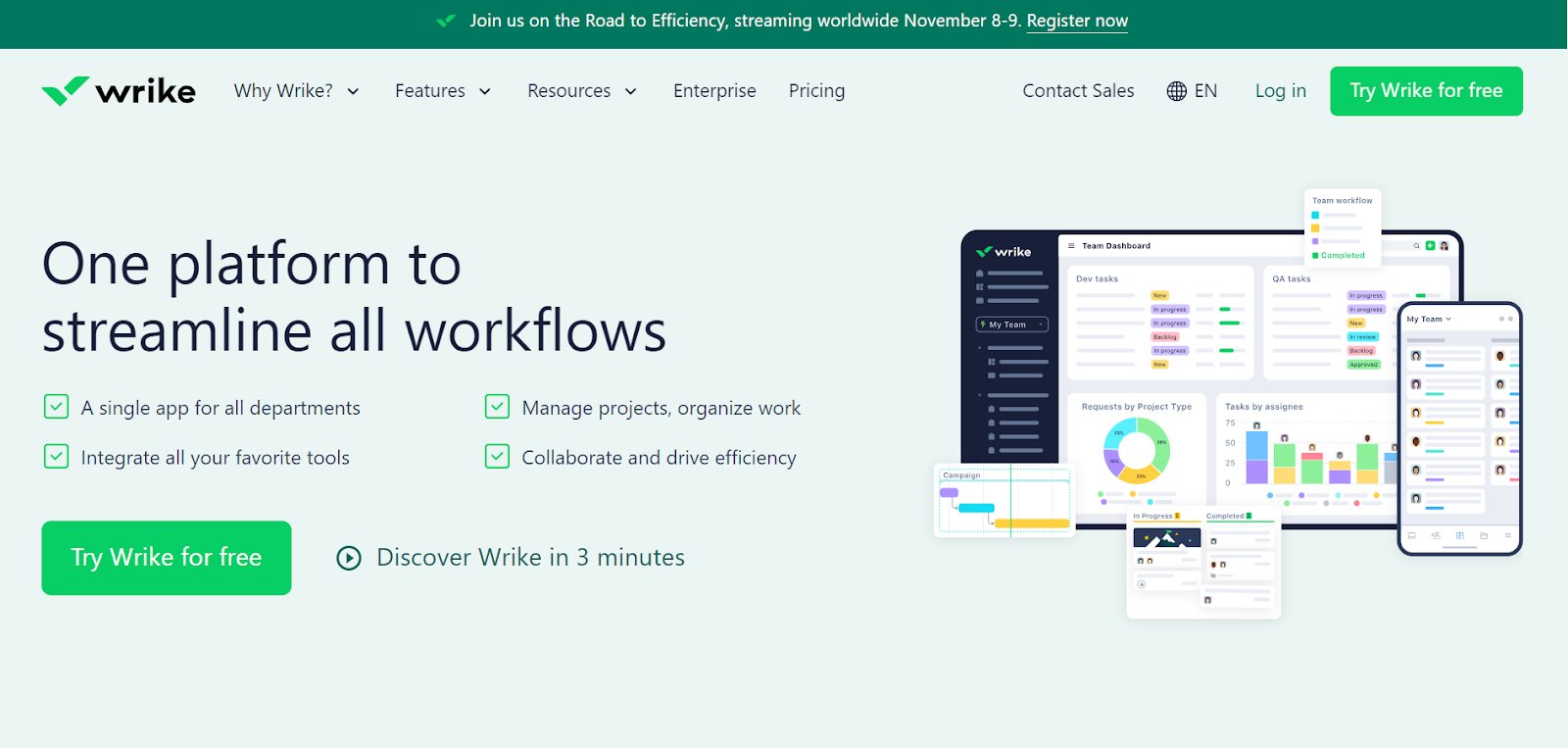
Features
- Customizable Workflows: Adapt workflows to align with the specific needs and processes of PR teams, ensuring seamless integration.
- Integrated Communication Tools: Enhance team communication through integrated messaging, fostering collaboration.
- Time Tracking and Reporting: Monitor project timelines and generate detailed reports for informed decision-making.
Pricing
- Wrike’s paid plans start at $9 per user/month. Also Free 14-day trial (No credit card required).
How ClientVenue can help in the project management of the Public Relations Business Plan?
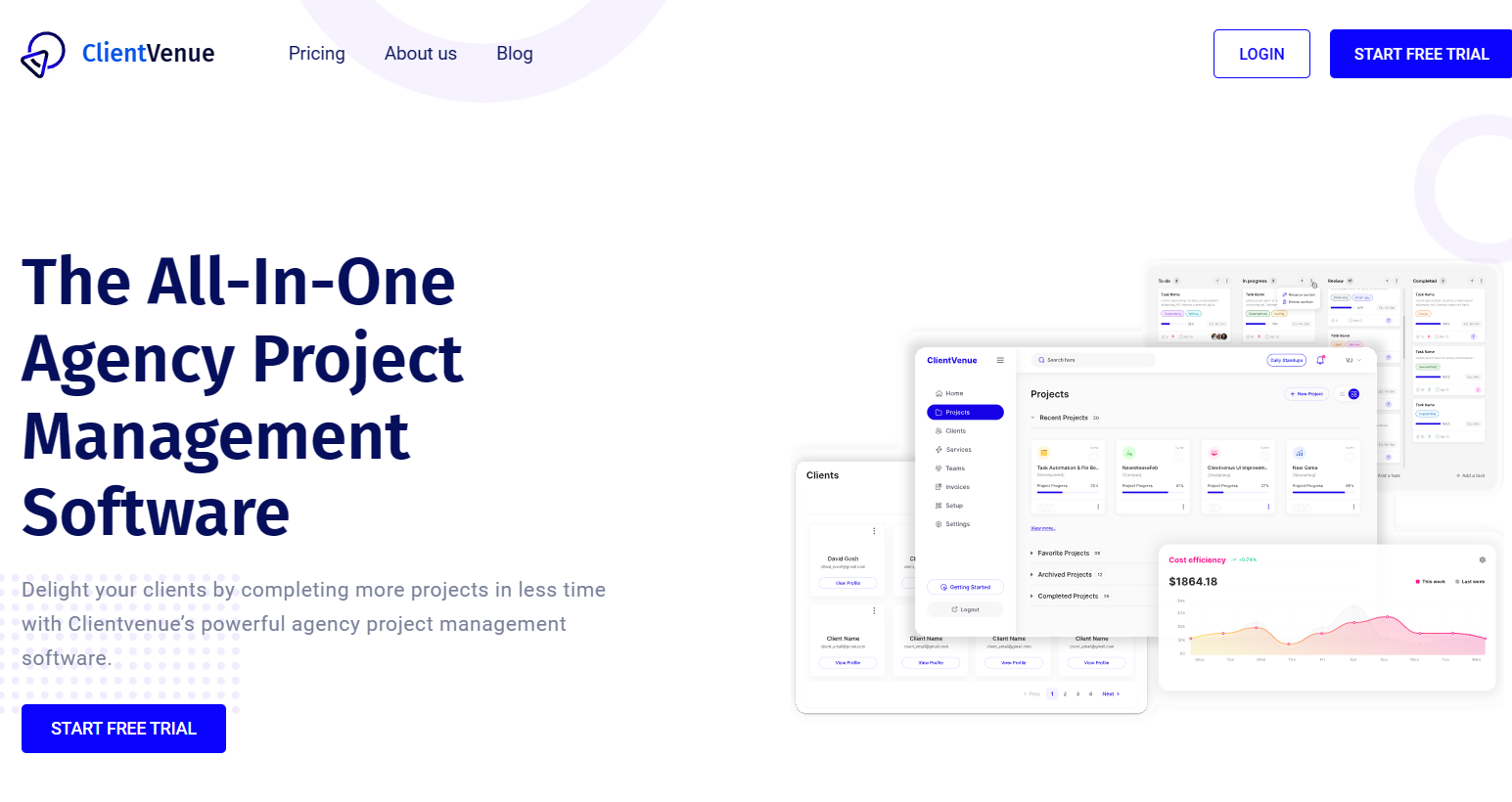
ClientVenue can significantly contribute to the project management of a Public Relations (PR) Business Plan by providing a centralized and collaborative platform tailored to the specific needs of PR professionals.
Here's how ClientVenue can assist in the project management of a PR Business Plan:
1. Centralized Communication
ClientVenue offers a centralized communication hub where PR teams can collaborate, share updates, and discuss strategies in real-time.

Communication channels within the platform facilitate efficient coordination among team members, ensuring everyone is on the same page.
2. Task Management and Progress Tracking
The platform allows PR managers to assign tasks to specific team members, ensuring clarity in roles and responsibilities.

Task tracking features enable PR professionals to monitor the status of assignments, identify bottlenecks, and keep projects on track.
3. Shared Work Environments
ClientVenue provides collaborative workspaces dedicated to PR projects, where team members can share ideas, files, and feedback seamlessly.

These workspaces foster a cohesive environment essential for creative brainstorming and continuous collaboration.
4. Seamless Communication Integration
With integrated communication tools such as messaging and video conferencing, ClientVenue eliminates the need for external platforms for discussions.

PR teams can conduct virtual meetings, brainstorming sessions, and client presentations within the same platform, streamlining communication.
5. Streamlined Data Access
Creative PR projects involve numerous files, and ClientVenue offers robust file organization features.
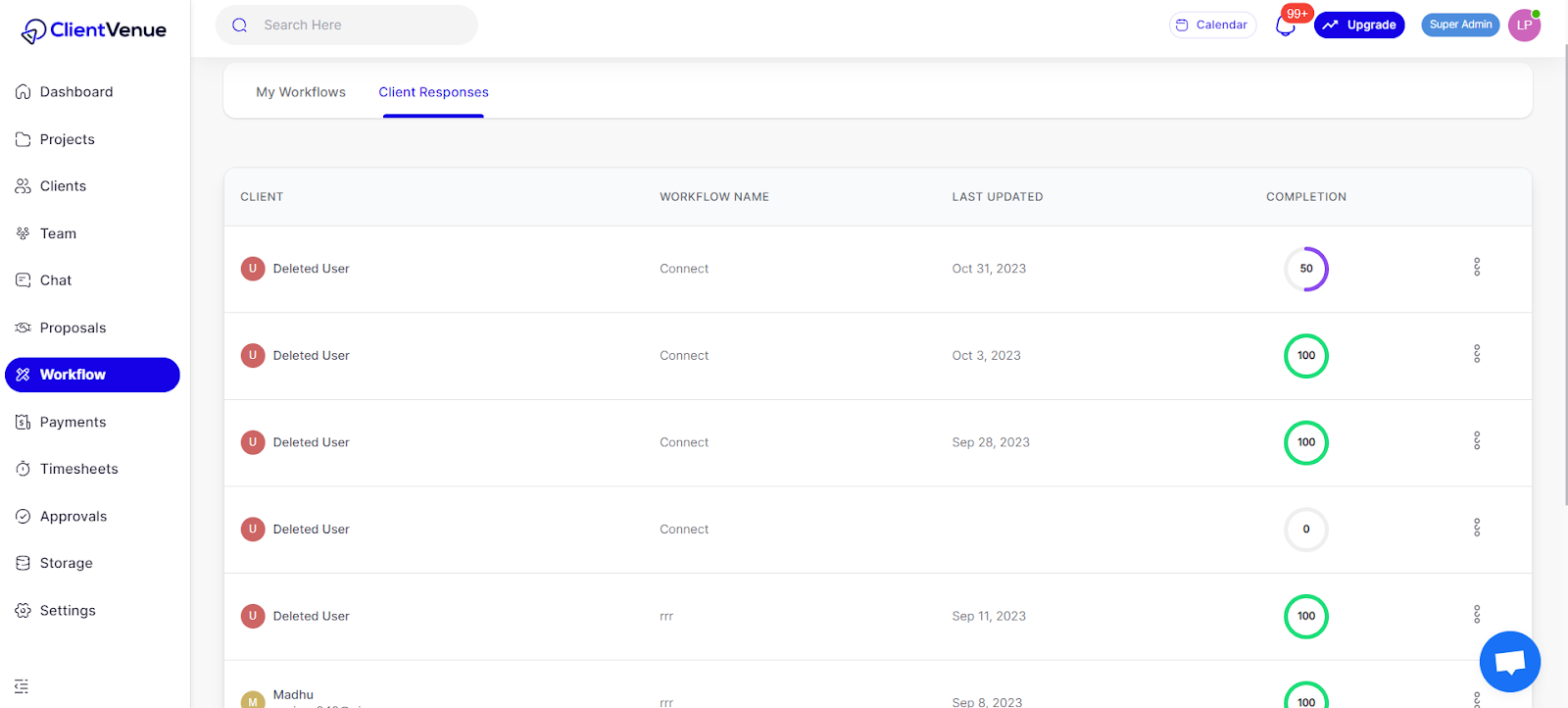
Team members have easy and secure access to project files, reducing delays and confusion, especially in situations where quick access to specific assets is crucial.
6. Real-time Notification Features
The platform automates notifications for deadlines, task assignments, and updates, keeping team members informed and projects moving forward.

Automated reminders help prevent oversights and ensure that everyone is aware of critical project milestones.
7. Collaborative Client Interaction
For PR projects involving client collaboration, ClientVenue provides a platform for sharing project updates, drafts, and receiving feedback.
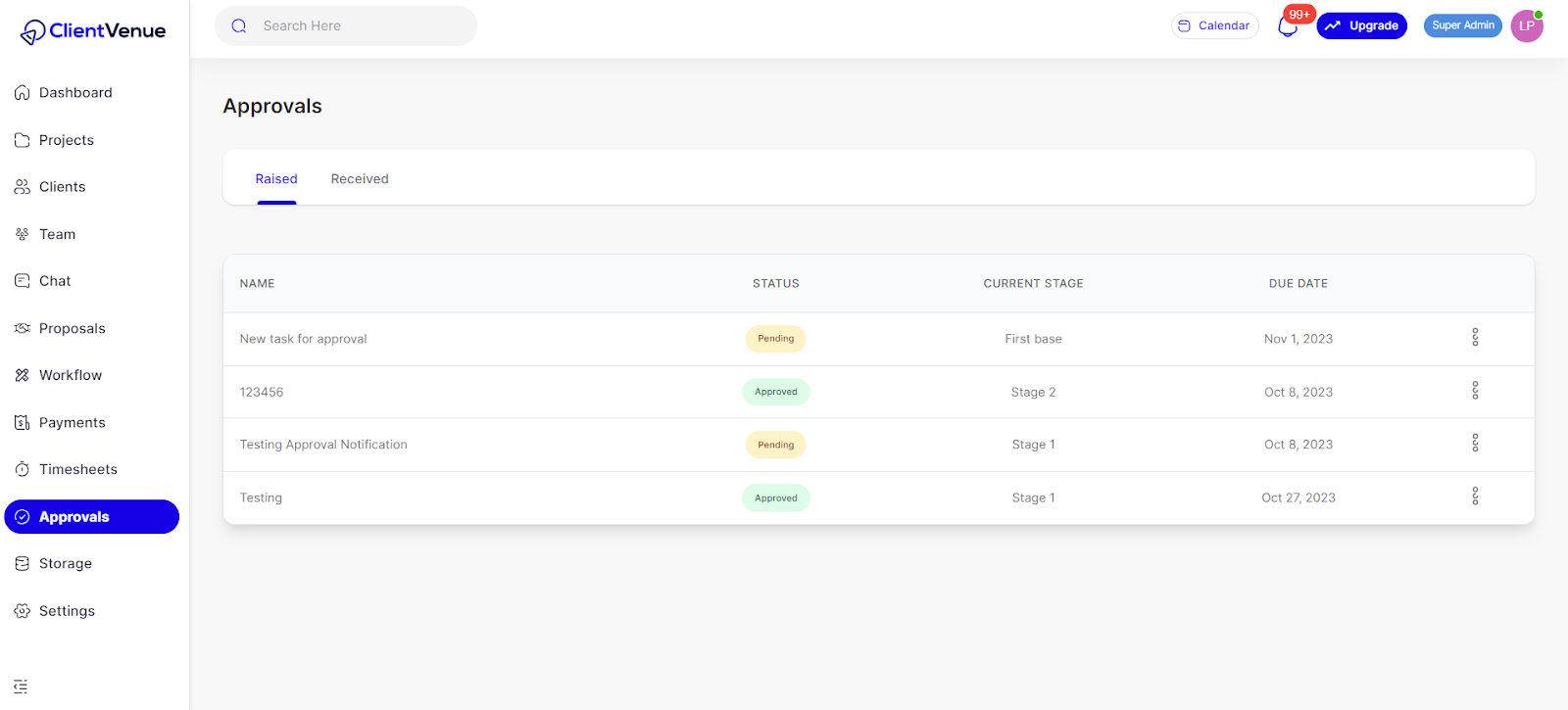
The approval process is streamlined, reducing delays and ensuring that PR projects move forward smoothly with client input.
8. Comprehensive Time Analytics
Efficient time tracking features help PR teams monitor the time invested in each project or task.

Reporting tools provide insights into resource utilization, allowing for data-driven decisions to optimize workflows and resource allocation.
9. Adaptive Workflow Configurations
Recognizing that every PR team operates differently, ClientVenue allows for customizable workflows to align with the unique needs and processes of each team.
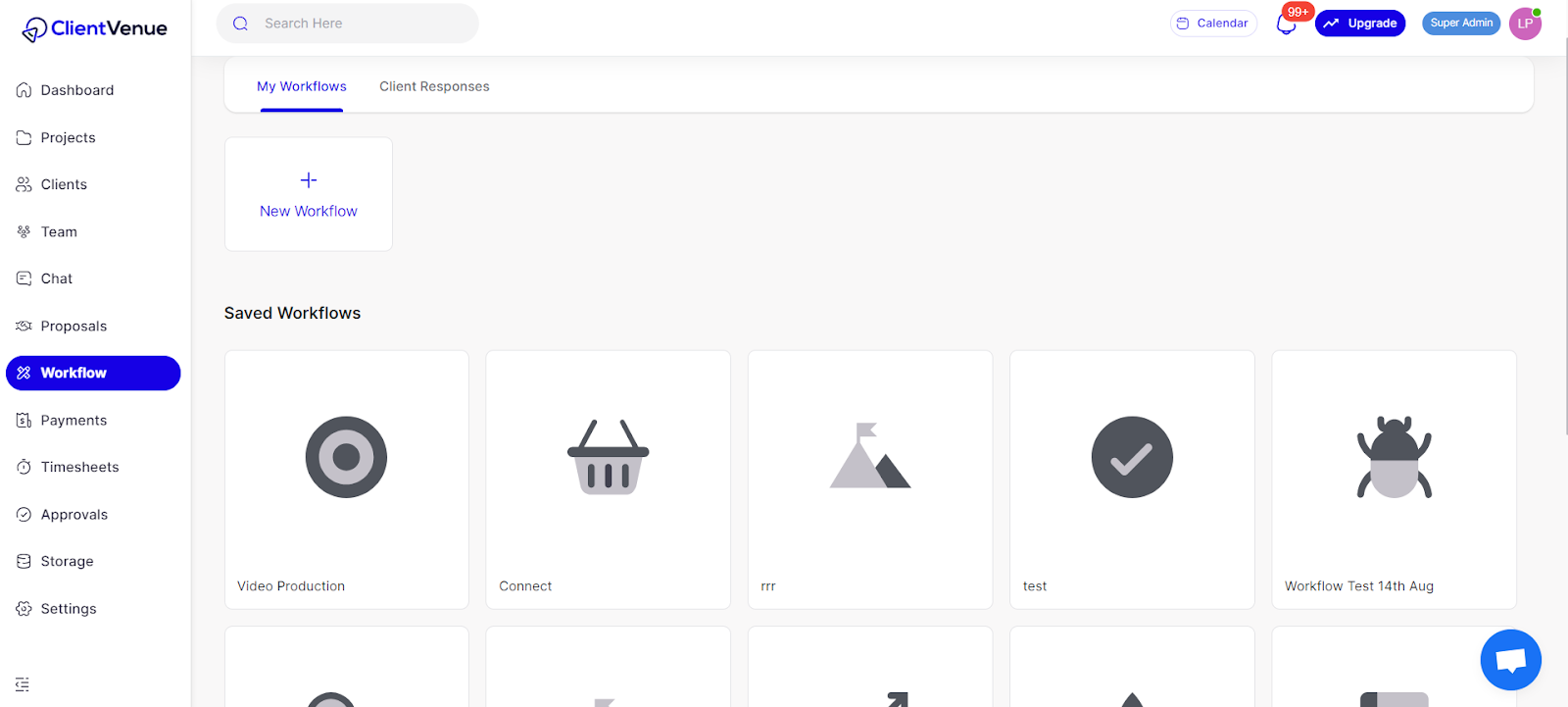
This adaptability ensures that the platform enhances existing workflows rather than imposing rigid structures.
Conclusion
In the dynamic world of Public Relations, where strategic communication is paramount, crafting an effective business plan is the key to success.
This article has provided insights into the importance of PR, the role of PR agencies, and the significance of a well-designed PR plan.
A comprehensive PR business plan becomes an invaluable tool as PR professionals navigate the challenges of reputation management, stakeholder engagement, and media relations.
ClientVenue emerges as the game-changer in PR project management, offering a tailored platform for seamless collaboration and efficient workflows.
With features like centralized communication, task management, and real-time notifications, ClientVenue ensures that PR teams can focus on strategic initiatives while streamlining their operations.
The platform's adaptability, collaborative workspaces, and version control for assets make it indispensable for PR professionals seeking to optimize their project management processes.
Elevate your PR business plan to new heights with ClientVenue – the ultimate project management platform designed for PR professionals.
From centralized communication to adaptive workflows, ClientVenue offers a suite of features tailored to the unique needs of PR teams. Streamline collaboration, enhance communication, and ensure project success with ClientVenue.






